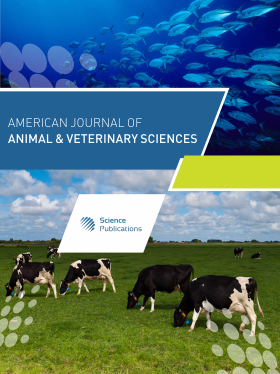Plasma Catecholamines, Sweat Electrolytes and Physiological Responses of Exercised Normal, Partial Anhidrotic and Anhidrotic Horses
- 1 University Putra Malaysia, Malaysia
Abstract
Problem statement: Malaysia imports horses from temperate countries to develop equine sports in the country. Several of these horses developed partial and complete anhidrosis. Approach: Normal, partial anhidrotic and anhidrotic horses were exercised to determine their sweating and physiological responses to exercise. The heart and respiratory rates, rectal temperature and blood samples were obtained before the horses were lunged at 10 km h-1 for 1 h and at again at 15, 30, 45, 60 min and 24 h after exercise. The blood adrenaline and noradrenaline concentrations were determined. Sweat samples were obtained at 60 min after exercise and analyzed for Na+, K+, Cl-, urea and total protein concentrations. Results: The normal horses sweated profusely all over the body after 5 min into exercise, but the partial anhidrotic horses showed sweating in the neck, brisket, shoulder, rump, perineum and axilla only after 20-30 min of exercise. The sweat Na+, K+, Cl-, urea and total protein concentrations were lower in the partial anhidrotic horses than in normal horses while the Na+:K+ was higher. The heart and respiratory rates and rectal temperature of anhidrotic horses reached maximum values of 133.6±0.8 beats min-1 and 186.8±0.5 breaths min-1 and 41.1±0.0°C respectively and took much longer to return to resting levels than other horses. The resting adrenaline concentrations in the anhidrotic horses were higher than in partial anhidrotic and normal horses, with the mean post-exercise adrenaline: Noradrenaline consistently above 1.15. Conclusion: The most important factor in equine anhidrosis was failure of sweat glands to respond to adrenaline. The anhidrotic horse regulated body electrolytes by means other than sweating. Anhidrotic horses exhibited exercise intolerance, particularly in hot and humid climates. There is a need to formulate a special regime for exercising anhidrotic horses in the tropical environment.
DOI: https://doi.org/10.3844/ajavsp.2009.26.31

- 6,684 Views
- 6,000 Downloads
- 9 Citations
Download
Keywords
- Sweat
- exercise
- electrolytes
- catecholamines
- anhidrosis
- horse
